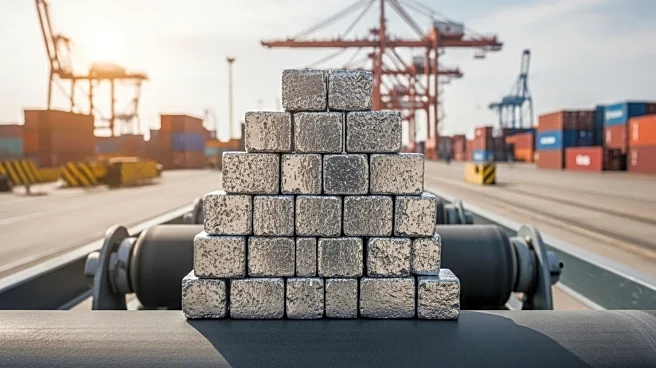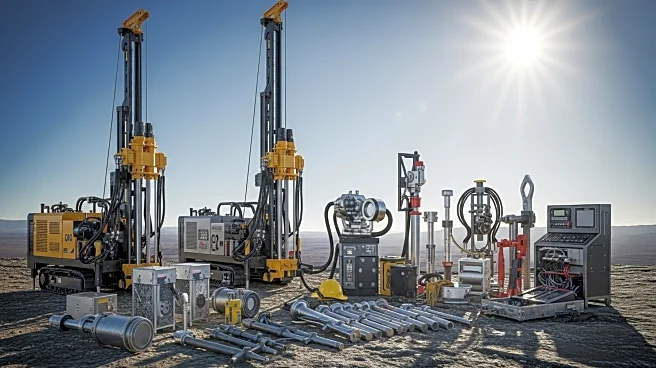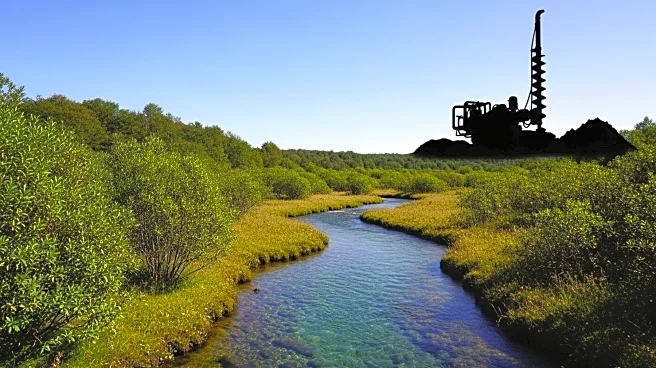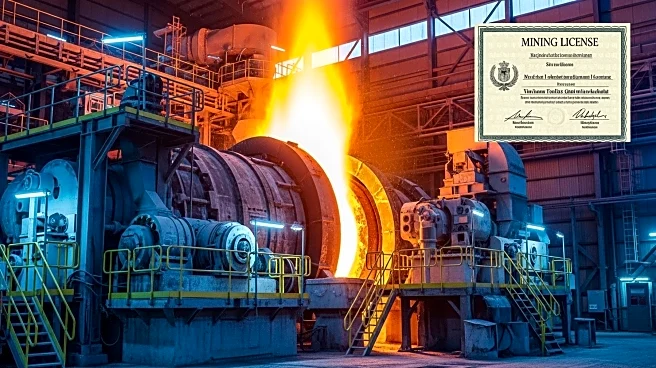What is the story about?
What's Happening?
BHP, an Australian mining company, has announced a significant investment in the modernization of infrastructure at Port Hedland, Western Australia. The company plans to invest A$1.4 billion (approximately $924 million) to enhance the port's capacity for iron ore transshipment. This upgrade includes the construction of a sixth car dumper (CD6) and additional conveyors, aimed at increasing ore unloading capacity and reducing downtime during scheduled equipment upgrades. The modernization project is set to begin in December 2025, with the first raw materials expected to be processed by CD6 by the end of 2028. The initiative is part of BHP's strategy to meet its medium-term iron ore production targets and improve operational reliability, with a goal to increase equipment availability from 60% to over 90%.
Why It's Important?
This investment is crucial for BHP as it seeks to support its annual production target of 305 million tons of iron ore. Port Hedland is a vital export hub for iron ore from the Pilbara region, and enhancing its infrastructure is expected to stabilize operations and improve ore mixing and screening capabilities. The upgrade will likely bolster BHP's competitive position in the global iron ore market, potentially increasing its market share and profitability. Additionally, the investment reflects the company's commitment to maintaining high production levels despite previous disruptions caused by cyclones in Western Australia.
What's Next?
Construction is scheduled to commence in December 2025, with the upgraded infrastructure expected to be operational by the end of 2028. BHP will likely continue to monitor and adjust its production strategies to align with global market demands and environmental conditions. Stakeholders, including investors and local communities, may anticipate further announcements regarding the project's progress and its impact on regional economic development.
Beyond the Headlines
The modernization of Port Hedland's infrastructure may have broader implications for the mining industry, including setting a precedent for similar investments in other critical export hubs. It could also influence environmental and regulatory discussions, as increased production capacity may raise concerns about sustainability and ecological impact.
AI Generated Content
Do you find this article useful?













